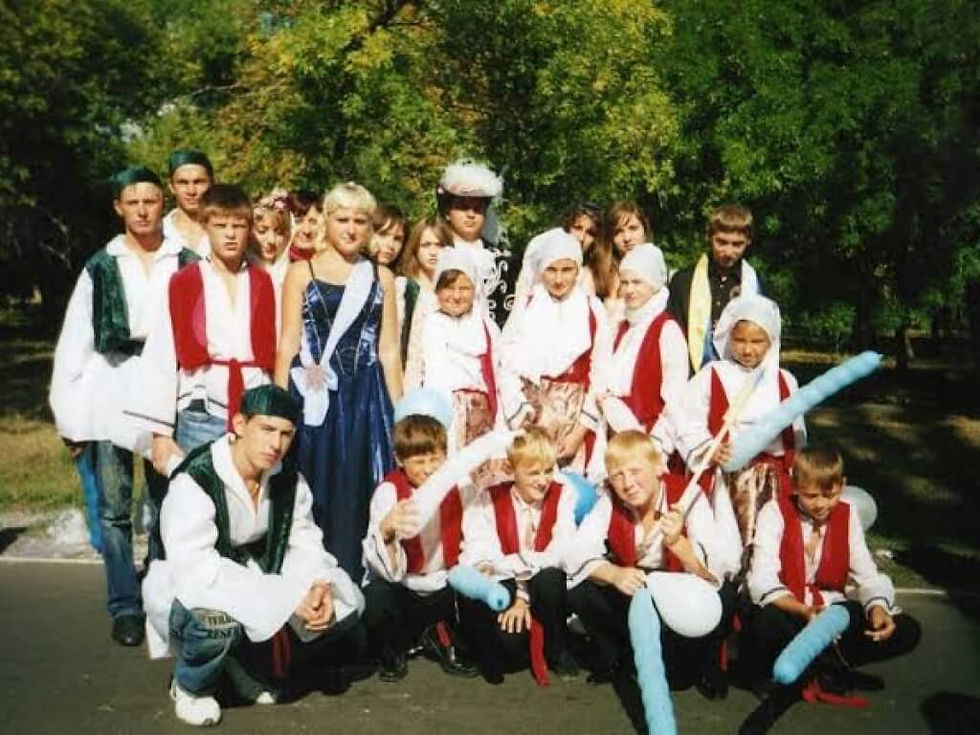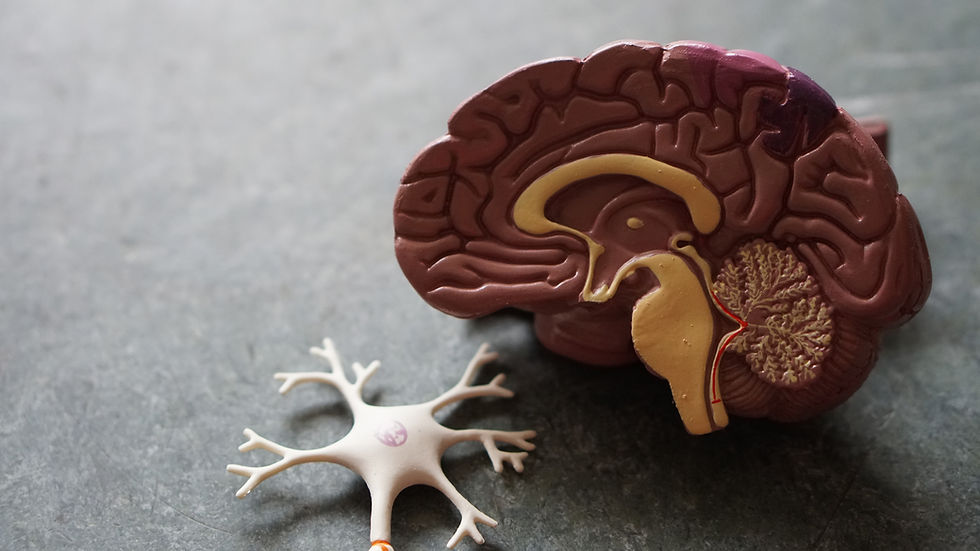The Turkish-Speaking People of Ukraine: Urums
- Ümit İşlek

- Aug 18, 2024
- 5 min read

One of the most discussed topics about Ukraine, which has recently been associated with war news, is whether the Ukrainian and Russian races are ethnically the same. When examined, it is noticed that there are many peoples in Ukraine. Although Ukrainians constitute the largest part of these, ethnicities such as Russians, Poles, Hungarians, Romanians, Greeks, Urums, Kazan Tatars, Armenians, Azerbaijanis, Uzbeks, Meskhetian Turks, Bulgarians, and others also live in this country. The population of many minorities, such as the Urums, whose rights are protected by law, is around one hundred thousand.
Although few in number, the Urums, whom the Russians call Greeks, are among the minorities living in Ukraine. The term Greco-Tatar used for Urums is reported to be an incorrect definition that unites two communities: Greek-speaking Greeks and Turkish-speaking people who do not call themselves Greek (Altınkaynak, 2004). Later, Greek speakers were called Rumey, and Turkish speakers were called Urum. Although the languages, social lives, and cultures of the two groups are different, the Urums, who live mostly in Ukraine, but also in Georgia, Greece, Armenia, Russia, and Kazakhstan, belong to the Orthodox sect of Christianity.
The Christian Urums, who lived in Crimea until the end of the 1770s, were deported to the central and northern parts of Ukraine during the reign of Tsarina Catherine II, along with 31,000 people of different origins. Not all of those subjected to deportation were Urums. Armenians and Greeks were also migrated along with the Urums. As a result of the migration, Armenians established five villages in their new homeland, while Urums and Greeks established twenty-two villages (Anzerlioğlu, 2009). Later, they dispersed to other centers of their own accord and acquired new homelands. Among the settled areas, the cities of Donetsk, Mariupol, Zaporizhia, and Dnipropetrovsk stand out (Altınkaynak, 2004). After this great deportation, a second migration took place. Around 3,000 Urums who migrated from Trabzon, Kars, Erzurum, and Giresun to the Tsalka region of Georgia between 1821-1825, migrated from there to Crimea and Ukraine between 1981-1986.
Of course, when considering the Urums of today, it cannot be claimed that they live in an area surrounded by Muslims, but the historical process shows otherwise.
The people involved in the second migration are known as Turkish-speaking Trabzon Greeks. They are known as the Christianized part of the Turks who lived in the regions from the north of the Black Sea to the Balkans, that is, in the regions where Kipchaks, Pechenegs, and Khazars were active (Kasapoğlu Çengel, 2004). It is known that as a result of the activities carried out by the Byzantine Church in the mentioned wide geography, Orthodoxy spread and this sect was adopted by Hun, Bulgarian, Pecheneg, Uz, and Cuman-Kipchak circles (Anzerlioğlu, 2013). However, it is not known when the immigrants involved in the great migration became Christians, or whether both migration groups became Christians under the same conditions.
The language of worship and daily conversation of the Urums, who adopted the Orthodox faith, is Turkish. The Turkish they speak is very close to Crimean Tatar Turkish. Although there are very few language studies on this subject, the result shows that Urum Turkish is in the Oghuz group (Uyanık, 2010). Urum Turkish has many common elements with Armenian Kipchak, Karaim, Gagauz, Crimean Tatar, and Turkey Turkish. The language spoken in Mariupol and Staryi, which are among the Ukrainian cities where Urums live the most, is of Crimean dialect Kipchak origin and was exposed to the influence of Oghuz between the 15th and 18th centuries (Kasapoğlu Çengel, 2004). The fact that Urums have Islamic vocabulary such as Allah, evalla (eyvallah), maşalla, cennet, saba xayır olsun, Rabbi, mismilla (bismillah) despite being Christian can be explained by this historical reality. On the other hand, just like the Karamanli Orthodox, the fact that they have lived among Muslims continuously must have played a major role in this.
Of course, when considering the Urums of today, it cannot be claimed that they live in an area surrounded by Muslims, but the historical process shows otherwise. In history, after Catherine II's edict, they suddenly found themselves in an area surrounded by Christians. For this reason, isolated groups continued their Crimean heritage and the cultural heritage they had accumulated before. Basic elements such as language, belief, and folklore have been preserved very vividly among the Urums.
The great similarities that especially folklore elements bear with Anatolian folklore are as surprising as the vocabulary. Folk tales, folk songs, some rituals, transition periods, family structure, idioms, and proverbs match exactly (Altınkaynak, 2007). For example, folk tales such as Aşıx Ğarib (Aşık Garip), Arzınan Ğamber (Arzu ile Kamber), Töroğlu (Köroğlu), Dayırnen Zore (Tahir ile Zühre); some fairy tales and stories, Aşık Garip folk songs, proverbs and idioms such as anasın kör, kızın al, avuzu bar, tili yox (ağzı var dili yok), em suçlu em küçlü (hem suçlu hem güçlü), alma piş, avuzma tüş (armut piş ağzıma düş) are the same as those in Anatolia. On the other hand, some elements have been shaped according to their own beliefs: Xızdan papaz bolmaz (a girl cannot become a priest), pitti bizim Paskalamız (our Easter is over) (Kasapoğlu Çengel, 2004).
Parallel to this, there are common elements in the transition period rituals of birth, marriage, and death ceremonies. Some of these have changed according to Christianity, while others have been preserved as remnants of old Turkish beliefs. For example, when looking at the wedding ceremony, it is understood that decorating horses, carrying a red flag while going to the bride's house, moving the bride's dowry from her mother's house, and making the bride cry are parallel to Anatolian weddings. On the other hand, the person who carries the red flag and wraps it around the pillow to be used by the bride and groom is the bride's godmother, which reveals the clear influence of Christianity on Urum traditions (Anzerlioğlu, 2009). Nevertheless, when looking at the traditions in detail, it is striking that Christian elements are less than Turkish elements.
It is astonishing that the aforementioned language, folklore, and daily life traditions have been preserved with such resistance. So much so that Urums have been subjected to the assimilation policies of both Russia and Greece. They lived under Russian rule for many years and were subjected to Russification policies and considered Russian. Greece, which has close relations with the Greek-origin Rumeys, has been carrying out Hellenization activities here for centuries. However, Urums state that they are not Greek and are completely different from Greeks except for their religious brotherhood (Tekin, 2007). On the other hand, as can be expected, interest in Russian and the Russian language is quite high among the younger generations.
Today, the population of the two groups officially referred to as Greek is around 120-130 thousand. 60-65 percent of them are Urums. Accordingly, their population should be around 70-80 thousand. The fact that the population of these two groups, whose total population was over 31 thousand even in their first migrations, is so low may be due to their Russification over time. Although the population in Ukraine has been declining since 1993, it is thought-provoking that the Urums have increased so little in population since the 1880s. Again, in connection with this, considering that Mariupol, where Urums live intensively, is one of the places where the devastating effects of the war that is still ongoing between Ukraine and Russia are experienced, the possibility of changes in the population is unfortunately increasing.
References
Altınkaynak, E. (2004). Ukrayna'daki Hıristiyan Türkler "Urumlar." Karadeniz Araştırmaları, 1, 37-57.
Altınkaynak, E. (2007). Urumlarda Aile, Gelenekleri ve Kurumsal Yapısı. Turkish Studies, 2(4), 98-105.
Anzerlioğlu, Y. (2009). Kırım’ın Hıristiyan Türkleri: Urumlar. Milli Folklor, 84, 107-113.
Anzerlioğlu, Y. (2013). Tarihî Verilerle Karamanlı Ortodoks Türkler. Türk Kültürü ve Hacı Bektaş Velî Araştırma Dergisi, 51, 171-188.
Kasapoğlu Çengel, H. (2004). Ukrayna’daki Urum Türkleri ve Folkloru. Milli Folklor, 16(61), 58-67.
Uyanık, O. (2010). Urum Türkçesinin Türk Dili Sınıflandırmalarındaki Yeri. Selçuk Üniversitesi Türkiyat Araştırmaları Dergisi, (27), 45-56.
Tekin, F. (2007). Urum Türkçesi Ses Bilgisi Üzerine Bazı Tespitler. Karadeniz Araştırmaları, 14, 93-100.
















コメント